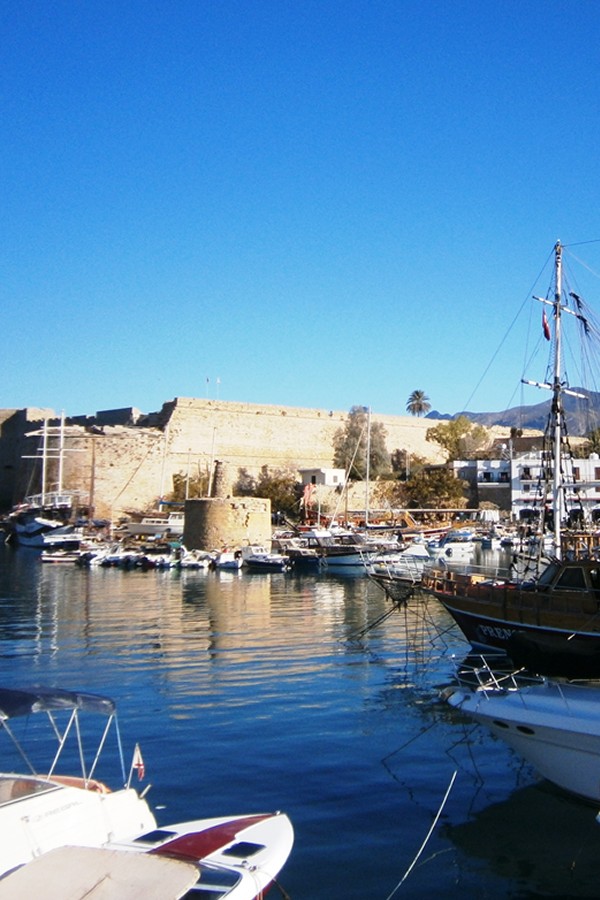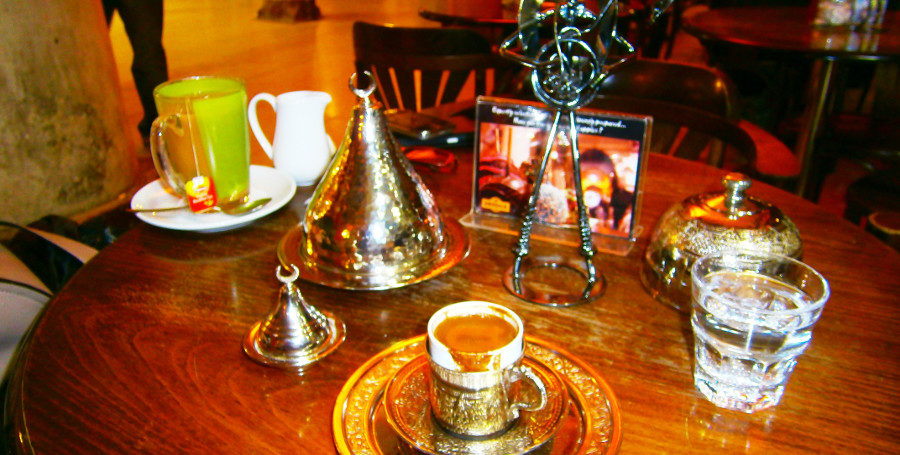
You can also listen to this article.
North Cyprus cuisine is a delicious blend of traditional Turkish and Mediterranean flavors, with influences from neighboring countries such as Greece, Lebanon, and Syria. Here are some popular dishes and ingredients you may find in North Cyprus:
Meze: Meze is a popular type of appetiser or snack that is commonly found in North Cyprus, as well as in other Mediterranean and Middle Eastern countries such as Turkiye. Meze consists of a variety of small dishes, such as dips, salads, and other appetizers, that are typically served with drinks, such as raki, ouzo, or wine.
Some common meze dishes in North Cyprus include hummus, tzatziki, babaganoush, dolmades (stuffed grape leaves), sigara borek (fried pastry rolls filled with cheese or meat), grilled halloumi cheese, and a variety of salads made with fresh vegetables, herbs, and olive oil.
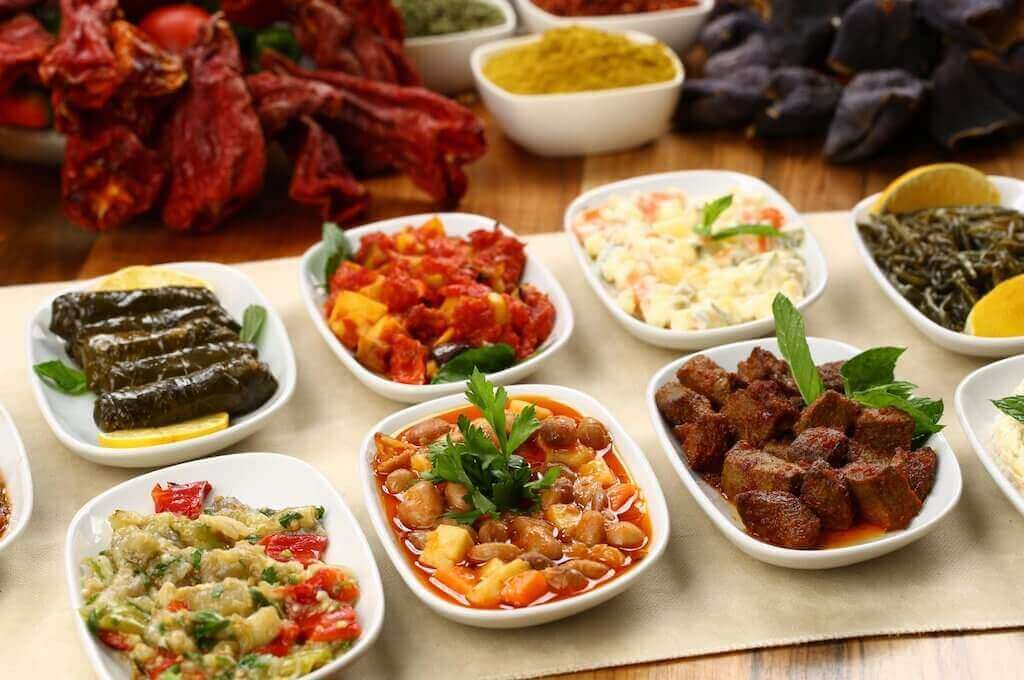
Meze is often served in a social setting, such as at a family gathering or in a restaurant with friends. It is typically enjoyed as a leisurely meal over a period of several hours, with people taking their time to savor each dish and enjoy the company of others.
Kleftiko: Kleftiko is a traditional Greek dish that has become popular in North Cyprus. It is a slow-cooked lamb or goat that is marinated with garlic, lemon juice, and oregano, then baked in a clay oven until it is tender and juicy.
The name “Kleftiko” comes from the Greek word “kleftis,” which means thief, and it is said to originate from a time when Greek bandits would steal sheep or goats and then cook them in the mountains in sealed pits to avoid being detected by their pursuers. Today, Kleftiko is a popular dish served in restaurants across Greece, Cyprus, and other Mediterranean countries.
The meat is marinated with a blend of herbs, lemon juice, and olive oil for several hours or overnight to allow the flavors to penetrate the meat. Then, it is wrapped in parchment paper or aluminum foil and cooked in a clay oven for several hours, until it is tender and falls off the bone.
Kleftiko is often served with traditional Greek side dishes, such as roasted potatoes, tzatziki sauce, and a Greek salad. It is a hearty and flavorful dish that is perfect for a special occasion or a family dinner.
Lahmacun: Lahmacun is a popular Middle Eastern (Turkiye) and Mediterranean dish that is similar to a thin crust pizza. It is a round, thin piece of dough that is topped with a mixture of ground meat, vegetables, and herbs, and then baked until crispy.
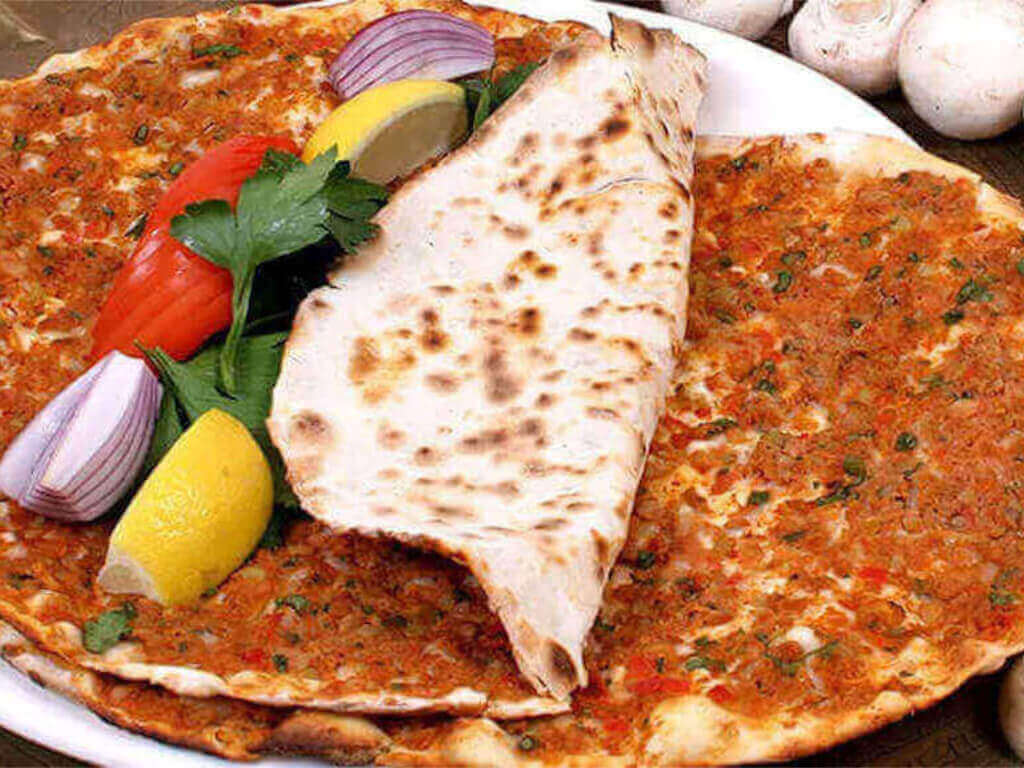
The meat topping is usually made with minced lamb or beef, mixed with finely chopped tomatoes, onions, garlic, and herbs such as parsley, cumin, and paprika. The dough is rolled out thinly and topped with the meat mixture before being baked in a hot oven until the edges are crispy and the topping is cooked through.
Lahmacun is often served as a snack or a light meal, and is usually eaten with a squeeze of lemon juice, some fresh parsley or mint, and a dollop of yogurt or hummus. It is a popular street food in many countries, and can be found in local bakeries or food stalls.
Lahmacun is a delicious and flavorful dish that is easy to make and perfect for sharing with friends and family. It is also a great way to enjoy a taste of the Middle East and Mediterranean cuisine.
Halloumi cheese: Halloumi cheese is a popular cheese that is commonly used in Mediterranean and Middle Eastern cuisine, including in North Cyprus. It is a firm, salty cheese that is typically made from a mixture of goat’s and sheep’s milk, although some varieties may also include cow’s milk.
Halloumi cheese has a distinctive texture that is somewhat rubbery or chewy, making it ideal for grilling or frying. It can be cooked without melting, and it maintains its shape and texture even when heated.
In North Cyprus, halloumi cheese is often served as a side dish or a main course. It is commonly grilled or fried and served with fresh herbs, such as mint, and lemon juice. It can also be used as a filling for sandwiches or wraps, or added to salads for an extra burst of flavor.
Halloumi cheese is high in protein and calcium, and is a good source of other important nutrients, such as zinc and vitamin B12. It is a delicious and versatile cheese that can be enjoyed in many different ways, and is a popular ingredient in many Mediterranean and Middle Eastern dishes.
Stuffed vegetables: Stuffed vegetables are a popular dish in North Cyprus and other Turkish, Mediterranean and Middle Eastern countries. The dish typically consists of vegetables such as tomatoes, peppers, zucchini, eggplant, and even grape leaves, that are hollowed out and filled with a mixture of ground meat, rice, herbs, and spices.
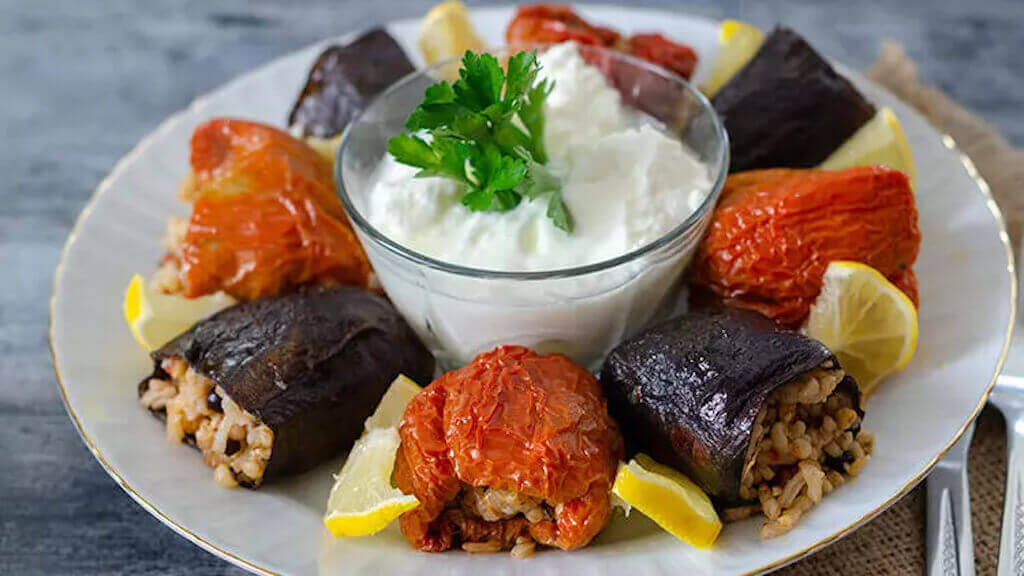
The filling mixture can vary depending on the region and the preferences of the cook, but it usually includes ingredients such as minced meat, onions, garlic, parsley, mint, and sometimes pine nuts or currants. The vegetables are then stuffed with the mixture and cooked in a tomato-based sauce until tender and flavorful.
Stuffed vegetables are often served as a main course or as part of a mezze spread, and can be enjoyed hot or cold. They are usually accompanied by yogurt, fresh herbs, or a side salad, and are a popular choice for special occasions and family gatherings.
Stuffed vegetables are not only delicious, but they are also a nutritious and healthy option, as they are packed with vitamins, minerals, and fiber. They are a great way to incorporate more vegetables into your diet, and are a satisfying and flavorful meal that can be enjoyed by everyone.
Baklava: Baklava, an inseparable desert of North Cyprus cuisine, is a sweet and rich pastry that is popular in North Cyprus, as well as in other Mediterranean and Middle Eastern countries. It is made by layering sheets of phyllo dough with a mixture of chopped nuts, sugar, and spices, and then baking it until golden brown.

The most common type of nuts used in baklava are walnuts and pistachios, although other nuts such as almonds, hazelnuts, or cashews may also be used. The nut mixture is often flavored with spices such as cinnamon, cardamom, or cloves, and may also be sweetened with honey or syrup.
After baking, the pastry is soaked in a sweet syrup made from sugar, water, and sometimes honey, which gives it a moist and tender texture. Baklava is usually cut into small diamond-shaped pieces and served as a dessert, often accompanied by a cup of strong coffee or tea.
Baklava is a delicious and indulgent treat that is enjoyed by people of all ages. It is often made for special occasions and holidays, and is a popular gift to bring to friends and family. While it may be high in calories and sugar, baklava is also a source of healthy fats and protein from the nuts, making it a satisfying and enjoyable treat in moderation.
Turkish coffee: Turkish coffee as part of North Cyprus cuisine is a traditional method of preparing and serving coffee that is popular in North Cyprus, developed in Turkiye (Ottoman time) and widely available in other Middle Eastern and Mediterranean countries. It is made by boiling very finely ground coffee beans in water, along with sugar (if desired), and is usually served in a small cup or demitasse.
The coffee beans used for Turkish coffee are usually roasted to a medium or dark roast and then ground to a very fine powder. The ground coffee is then boiled in a small copper or brass pot called a cezve or ibrik, along with water and sugar, until it foams up and boils over. The coffee is then poured into small cups, leaving behind the grounds in the bottom of the pot.
Turkish coffee is known for its strong, rich flavor and its thick and frothy texture. It is often enjoyed with a small glass of water on the side to cleanse the palate between sips. It is also traditional to serve Turkish coffee with a piece of Turkish delight, a small sweet confection, on the side.
Turkish coffee is a popular social beverage and is often served as a sign of hospitality in North Cyprus and other Middle Eastern cultures. It is also an important part of traditional Turkish and Cypriot coffee culture, and is enjoyed by people of all ages.
These are just a few examples of the delicious cuisine you can enjoy in North Cyprus. If you have the opportunity to visit, be sure to try as many different dishes as possible!




